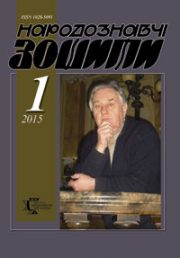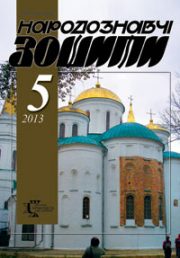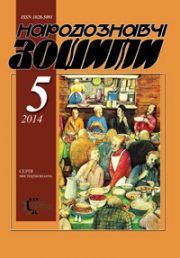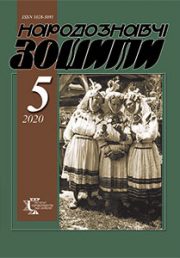The Ethnology Notebooks. 2023. № 2 (170), 406—412
UDK75.038.2+75.038.11(477)
DOI https://doi.org/10.15407/nz2023.02.406
UKRAINIAN MODERNIST PAINTERS IN FOREIGN ART ENVIRONMENTS: THE PARIS ENVIRONMENT
BABUNYCH Yulia
- ORCID ID: https://orcid.org/ 0000-0002-1947-8325
- Candidate of Art Studies (PhD),
- Associate Professor of the Department of Art History and Theory,
- Lviv National Academy of Arts,
- 38, Kubiyovycha St., 79011,Lviv, Ukraine,
- Contacts: e-mail: yulia.babunych@ukr.net
Abstract. Problem Statement. The article examines the problem of the activities of Ukrainian modernist painters outside of Ukraine. The relevance of the problem is given by the need to study the artistic experience of Ukrainian artists in emigration and its connection with the sources of national culture. Many current art phenomena in the combination of national and multicultural experiences have established themselves outside the Ukrainian ethnic lands, primarily in the leading art centers of Europe.
Purpose. In this connection, one of the foreign centers of creative activity of Ukrainian modernists of the first third of the 20th century, namely Paris, was analyzed, which became the purpose of the publication.
Results. Based on the analysis of paintings, it was determined that they had powerful professional skills and various individual artistic experiences. At the same time, it was found that Ukrainian modernists in emigration had a certain commonality of creative qualities, in particular, in the area of individual treatment of plastic form and in the field of color.
Conclusion. The article revealed and proved that, having formed pro-European painting visions, domestic modernist artists did not leave the Ukrainian sources of their creativity. Many artists from Ukraine demonstrate commitment to national cultural and artistic traditions in the context of developing their own pictorial concepts and worldview orientations. The introduction of national elements of Ukrainian culture into the artistic space of European modernism played an important role.
The research methodology is based on theoretical analysis, systematization and generalization and historical review.
Keywords: modernism, painting, artistic environment, artist, creativity.
Received 25.02.2023
REFERENCES
- Horbachov, D. (2008). Hopashno-sharovary culture as a source of the world avant garde. Kyiv: Smoloskyp [in Ukrainian].
- Noha, O., & Kodlubay, I. (1996). Sonia Delaunay returns to Ukraine via Lviv. At the crossroads of Europe and the age (Pp. 117—308) Lviv: Misioner [in Ukrainian].
- Susak, V.(2010). Ukrainian artists of Paris. Kyiv: Rodovid [in Ukrainian].
- Yatsiv, R. (1998). Ukrainian intellectuals on the artistic map of Europe in the 1900s — early 1920s.The Ethnology notebooks, 4, 434—445 [in Ukrainian].
- Markade, V. (1980). Ukrainian contribution to the avant-garde art of the early 20th century. Modernity, 7— 8, 202—221 [in Ukrainian].
- Mudrak, M. (2018). The new generation and artistic modernism in Ukraine. Kyiv: Rodovid[in Ukrainian].
- Hundorova, T. (2009). Manifestation of the word. Discourse of early Ukrainian modernism. Kyiv: Krytyka[in Ukrainian].
- Marcade, V. (1990). Art d’Ukraine. Lausanne: l’Age d’Homme.
- Holod, I., Kravchenko, Ya., Kozak, N., Mykhaylyuk, O., & Yatsiv, R. (2013). Ukrainian fine art: names, biographies, works (XI—XXI centuries). Kharkiv: Fakt [in Ukrainian].
- Kovzhun, P. (1934). Hlushchenko. Hlushchenko: texts by Svyatoslav Gordynskyi and Pavel Kovzhun. Lviv: Asotsiatsiya nezalezhnykh ukrayins’kykh mystsiv [in Ukrainian].
- Zalozets’kyy, V. (1926, October). Neoclassicism of Babi and Hlushchenko. Ukrainian art: Ukrainian month of plastic (Part 1, pp. 12—16) [in Ukrainian].
- Hordyns’kyy, S. (1934). Hlushchenko. Hlushchenko: texts by Svyatoslav Gordynskyi and Pavel Kovzhun. Lviv: Asotsiatsiya nezalezhnykh ukrayins’kykh mystsiv [in Ukrainian].
- (1969). Mykhaylo Andriyenko. Munich [in Ukrainian].







